Omnipresent Soybean Maladies
BY Dairyland Seed Agronomy Team
SDS and BSR
SDS and BSR have similar visual symptomatology and infection period with the telltale signs (chlorotic blotches that form between the veins) usually showing up in the mid-to-late reproductive stages of soybeans. This result is from ubiquitous soilborne pathogen loads that are always at work very early within the soil profile.
Sudden Death Syndrome (SDS) is caused by the fungus Fusarium virguliforme, and Brown Stem Rot (BSR) is caused by the fungus Cadophora gregata. While BSR is typically more common north of Interstate 70, the usually-more-southern SDS pathogen has been marching into more northern geographies and is being identified and confirmed increasingly in the Dairyland Seed footprint. Both pathogens infect the plant early in the spring entering via the root system and infecting the plant’s internal vascular tissue. There is no known genetic resistance for SDS, but for BSR, there are major genes that can provide a marked improvement in infection rate.
Neither disease can be controlled well after the inoculum is introduced to the plant. Therefore, management tactics and proper seed selection are key to reducing losses to these pathogens.
- Keep accurate records of problem fields and varieties.
- Planting problem fields later in the spring and eliminating soil compaction can also help to reduce the incidence of SDS and BSR.
- Select soybean varieties with high yield potential and adequate tolerance for one or both pathogens.
- Selecting products with BSR major genes (HT or MT in our product guide), along with using seed treatments like ILeVO®, will help control SDS.
An SCN correlation, notice: A field can have either SDS or BSR, and not soybean cyst nematodes (SCN). Or, it can have SCN and not have SDS or BSR. However, if a field has SCN, the likelihood of an SDS or BSR infection increases because when SCN feeds, it causes microscopic injuries to the root, creating sites where either of these diseases can easily enter and infect the root.
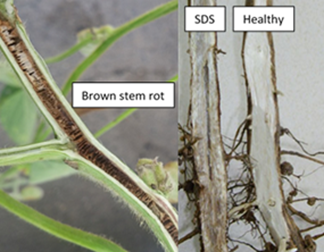
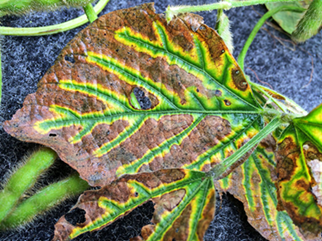
PRR
Phytophthora Root Rot (Phytophthora sojae) is one of the most destructive soybean pathogens in the northern growing regions. It belongs to a large group of organisms called Oomycetes, commonly known as the destructive “water molds.”
- The fungus infects plants later in the season following periods of heavy rain, causing stem rots or chronic root rot.
- Phytophthora root and stem rot develop quickly in warm, saturated soil. Warm soil and rain at frequent weekly intervals offer ideal conditions for phytophthora diseases. Optimum conditions for infection are warm soils at a temperature greater than 60°F, and soils that are flooded or saturated.
- Phytophthora diseases are most common in fields or parts of fields with poor drainage. They can also occur in well-drained fields when the pathogen is present, and the soil is saturated for 7 to 14 days due to heavy rain or via irrigation.
Single gene resistance, multiple or stacked resistance are available for many common races of PRR such as Rps1a, Rps1c, Rps1k, Rps3a, and Rps6, or a combination of one or more Rps genetic stacks to help protect plants typically referred to as vertical resistance.
Varieties with the same resistance genes may perform differently because of different levels of partial resistance (field or horizontal resistance) to all pathotypes of Phytophthora. Soybean varieties with high levels of partial resistance may still become infected with P. sojae, but symptoms are not as severe as varieties that are highly susceptible. Horizontal or field resistance levels will not be effective during germination and early growth and typically disease pressure becomes more evidenced after plants are established, or when disease pressure or problematic environmental factors are extremely high.
In fields with known phytophthora problems or conditions that would favor disease, we recommend choosing a cultivar with the best levels of partial resistance available in the desired maturity group and use a proven fungicidal seed treatment with unprecedented protection such as our LumiGEN® treatment package, which contains Lumisena®,‑the newest MOA against this pathogen. Partial resistance will not eliminate phytophthora, but it may delay disease onset. Select a cultivar based on which specific resistance genes are known to be effective in your region. There are always instances where environmental situations can lead to increased pressure. Flooding after a prolonged dry stretch is proving to be the case in 2023 for this pest.
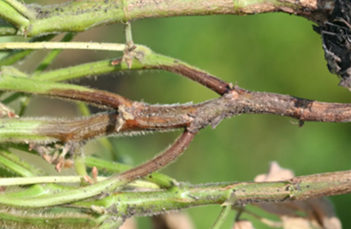
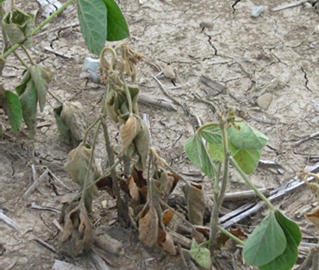
White Mold
White Mold, Sclerotinia sclerotiorum, primarily infects the soybean plant through the flowers. Humid conditions coupled with rain and moderate temperatures during soybean flowering are conducive for white mold infection. Management is important as this fungus can survive in the soil as sclerotia for several years. Fungicides are effective against white mold if applied around the R1 to R3 growth stage. Other management practices include lower planting populations, wide row spacing, crop rotation and tillage.
Foliar symptoms of white mold are gray-green interveinal coloring, which can resemble other soybean diseases such as brown stem rot or stem canker. Symptoms usually appear in soybeans between the R3 and R6 growth stage. Fluffy white mycelium growth can be found on the stems near the nodes. Leaves of infected plants eventually die but remain attached to the stem.
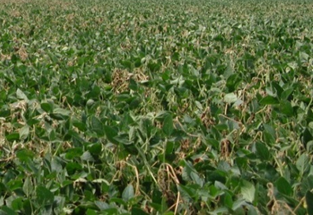
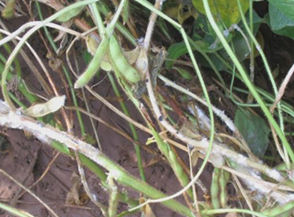
Septoria
This ever-present fungus survives on infected leaf and stem residue. Warm, wet weather favors disease development. Disease usually stops developing during hot, dry weather but may become active again near maturity or when conditions are more favorable.
There are no known sources of resistance, but differences in susceptibility occur among soybean varieties. The host range of the pathogen includes other legume species and common weeds such as velvetleaf. Rotation to non-host crops such as alfalfa, corn, and small grains and incorporation of infested crop residue into the soil will reduce survival of S. glycines. Proper fungicide timing can reduce symptomatology and yield losses when disease pressure and scouting confirm the need to do so.
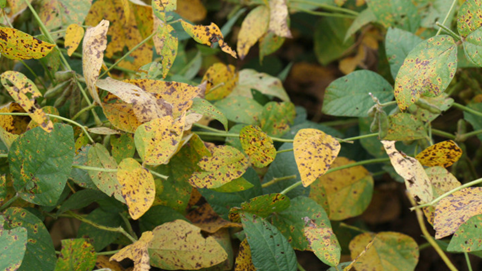

Brian Weller
Western Region
507.456.3034

Rod Moran
Western Region
507.456.3034

Dan Ritter
Central Region
219.863.0583

Branden Furseth
Northern Region
608.513.4265

Mark Gibson
Eastern Region
260.330.8968

Amanda Goffnett
Eastern Region
989.400.3793

Ryan Mueller
Eastern Region
989.400.3793
